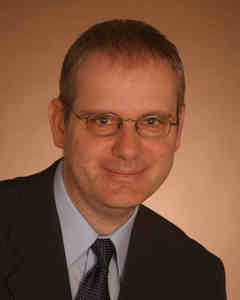


Organic semiconductors are promising materials for low-cost and easy-to-process electronic and optoelectronic devices. Besides conjugated polymers, an important class of organic semiconductors are molecular crystals of high purity. Due to their high degree of structural order, such crystals are ideal candidates for the investigation of the intrinsic excitations and charge-carrier transport phenomena in organic solids. A particularly important and challenging topic is the understanding of the charge-carrier mobilities in these crystals, as the mobility is a fundamental material property and a central quantity for the optimization of device performance. The description of charge transport in organic crystals is a nontrivial task due to the strong coupling of electronic and vibronic degrees of freedom. In my talk, I will present a theory for charge transport in organic crystals which generalizes Holstein's small polaron model to polarons of arbitrary size and and allows to calculate the carrier mobility from density-functional theory (DFT). The generalized mobility expression treats coherent band transport and thermally induced hopping on equal footing and reproduces the results of previous theories in the respective limits. As a prototypical example, the theory is applied to herringbone-stacked crystals where the temperature dependence of the mobilities is simulated and compared to experimental data. Finally, the mobility anisotropy is analyzed by a novel 3D visualization technique for the relevant transport channels.



Organic semiconductors are promising materials for low-cost and easy-to-process electronic and optoelectronic devices. Besides conjugated polymers, an important class of organic semiconductors are molecular crystals of high purity. Due to their high degree of structural order, such crystals are ideal candidates for the investigation of the intrinsic excitations and charge-carrier transport phenomena in organic solids. A particularly important and challenging topic is the understanding of the charge-carrier mobilities in these crystals, as the mobility is a fundamental material property and a central quantity for the optimization of device performance. The description of charge transport in organic crystals is a nontrivial task due to the strong coupling of electronic and vibronic degrees of freedom. In my talk, I will present a theory for charge transport in organic crystals which generalizes Holstein's small polaron model to polarons of arbitrary size and and allows to calculate the carrier mobility from density-functional theory (DFT). The generalized mobility expression treats coherent band transport and thermally induced hopping on equal footing and reproduces the results of previous theories in the respective limits. As a prototypical example, the theory is applied to herringbone-stacked crystals where the temperature dependence of the mobilities is simulated and compared to experimental data. Finally, the mobility anisotropy is analyzed by a novel 3D visualization technique for the relevant transport channels.